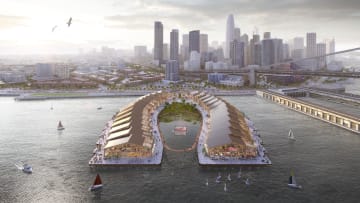Building for a flooded future: Architects are designing for the new climate reality
 Climate change is making cities more susceptible to flooding. According to a 2019 study, global sea levels are expected to rise between two and seven feet over the course of the century; by 2100, at least 190 million people could be living in areas below the projected high-tide line.
Climate change is making cities more susceptible to flooding. According to a 2019 study, global sea levels are expected to rise between two and seven feet over the course of the century; by 2100, at least 190 million people could be living in areas below the projected high-tide line.

“If our findings stand, coastal communities worldwide must prepare themselves for much more difficult futures than may be currently anticipated,” the study warned.

Separate research concluded that if the world does nothing to mitigate sea level rise, coastal flooding could cause damage worth up to 20% of global gross domestic product by 2100.
The threat of flooding is changing the way cities are built, and architects are adapting their designs to a new climate reality.
Using sustainable materials and innovative techniques, these designs from across the world could be increasingly important in a future where flooding might be widespread.
Forty percent of the human population lives within 100 kilometers of a coastline, with one in ten living under ten meters above sea level. As climate change induces more volatile flooding events and long-term sea level rises, it is estimated that coastal flooding could cause as much as $1 trillion of damage per year by 2050. We cannot escape the reality that cities, and their populations, are more vulnerable to flooding than ever.
There is therefore a duty on architects, planners, and urbanists to plan and construct resilient responses that can slow, and even reverse, the effects of urban flooding. Around the world, cities are developing action plans that combine global thinking in resiliency with local geographic and urban conditions, all with a common goal of defending urban populations from floods.
AirAsia’s future in doubt due to Covid-19; share price tumbles





You must be logged in to post a comment.